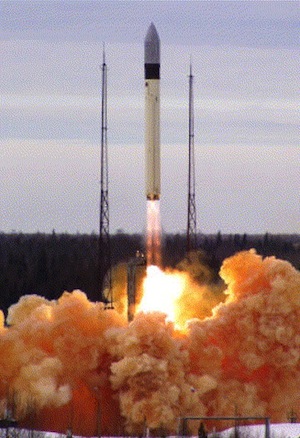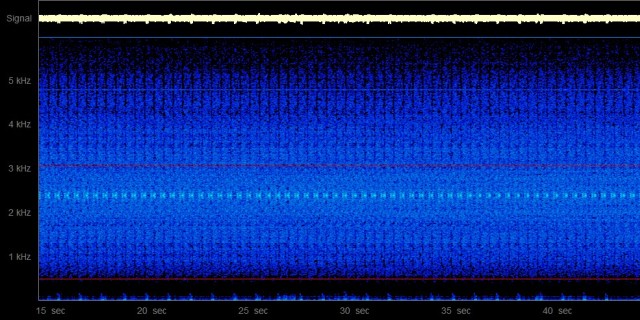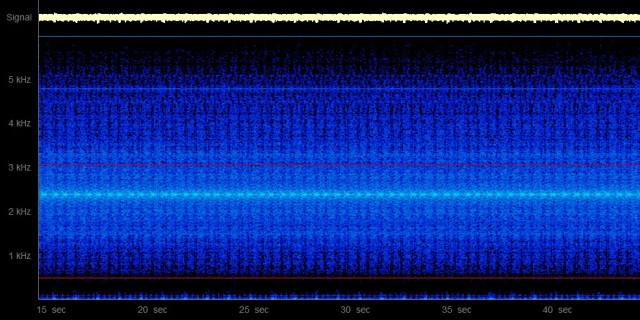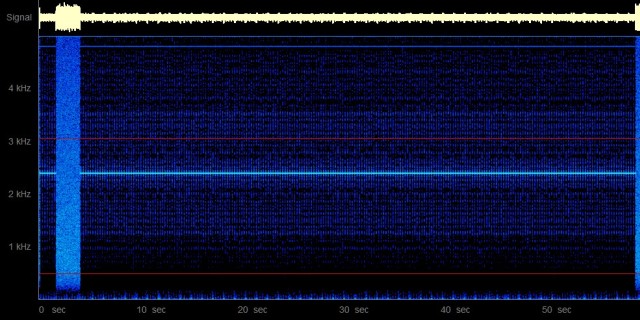RS-40 is launched.
 A Russian Rockot Launch Vehicle blasted off from Pad 133/3 at the Plesetsk Cosmodrome at 1:35 GMT on Saturday, July 28 on a mission to deliver four payloads to Low Earth Orbit. All payloads were delivered to their intended orbits and the mission was declared a success by officials. On this flight, three Gonets-M Communication Satellites, the MiR technical demonstration satellite and the Rodnik Satellite for the Ukranian Military Satellite was deployed to Orbit.
A Russian Rockot Launch Vehicle blasted off from Pad 133/3 at the Plesetsk Cosmodrome at 1:35 GMT on Saturday, July 28 on a mission to deliver four payloads to Low Earth Orbit. All payloads were delivered to their intended orbits and the mission was declared a success by officials. On this flight, three Gonets-M Communication Satellites, the MiR technical demonstration satellite and the Rodnik Satellite for the Ukranian Military Satellite was deployed to Orbit.
This launch marked the Return-To-Flight Mission for the Rockot Launcher that suffered a failure on its previous mission on February 1, 2011 when the Upper Stage of the launcher encountered a malfunction, placing the Payloads in a lower-than-planned Orbit. After the failure, the manufacturer of the Launcher and Upper Stage, the Khrunichev State Research and Production Space Center, suspended Rockot Launches to investigate the cause of the premature shutdown of the Briz-KM Upper Stage. After the cause of the failure was found, Rocket was approved for flight once again. During final preparations for the Return To Flight Launch, a problem with the BrizKM Upper Stage was found and the mission was delayed by three weeks in early July to give teams sufficient time to repair the electronics of the Upper Stage and fix a wiring issue.
Launch occurred on time on July 28 and the Rockot launcher blasted off as expected. Rockot is a two-stage liquid-fueled launch vehicle, usually equipped with a Briz-KM Upper Stage, that is capable of delivering payloads of up to 2,140 Kilograms to Low Earth Orbit and 1,200 Kilograms of Payloads to Sun-Synchronous Orbit. The vehicle stands 29.15 meters tall and has a main diameter of 2.5 meters. Rockot has a launch mass of 107,000 Kilograms and uses Unsymmetrical Dimethylhydrazine and Nitrogen Tetroxide as Propellants. The first stage of the Launcher is 17.2 meters long and is powered by three RD-0233 Engines and one RD-0234 Engine with a total liftoff thrust of 1,870 Kilonewtons. The first stage burns for 122 seconds before being separated. The second stage of the Rockot Launcher is 3.9 meters in length and uses a 240-Kilonewton RD-0235 Engine for propulsion.
*File Image* – Photo: Eurockot – Rockot www.Eurockot.com
The second stage also has four vernier thrusters each providing 16 Kilonewtons of thrust. Second Stage Burn time is 183 seconds. The Briz-M Upper Stage of the vehicle can be ignited multiple times featuring missions with coast phases to reach a variety of orbits. Also, Briz-M provides precise injection capabilities. The Upper Stage is powered by an S5.98 Engine which can burn for up to 1,000 seconds, Actual Briz-KM performance depends on the Mission Profile. The vehicle has a dry mass of 1,320 Kilograms and includes avionics, thermal control systems (active and passive) as well as payload accommodations. Briz-KM carries 3,310 Kilograms of N2O4 Oxidizer and 1,665 Kilograms of UDMH Fuel.
The two stages of the Launcher performed as planned and the Upper Composite of the Vehicle consisting of the Briz-KM and the four payloads, was separated. The Briz-KM made its first burn to place the stack in a Low Earth Parking Orbit before making multiple burns to achieve an altitude of about 1,400 Kilometers and an inclination of 82.6 degrees to deliver its payloads to their desired Orbits at 3:19 GMT. Gonets M Satellites are Russian Communications Satellites. A number of Gonets Satellites are part of the constellation that is operating in Low Earth Orbit at an altitude of about 1,400 Kilometers circling Earth in high-inclination orbits. Gonets M are operated by the Gonets SatCom telecommunications company that provides communication services for a number of users and applications. Gonets satellites are used by industries and governments for different purposes including asset management, tracking of moving and fixed objects, environmental monitoring, meteorology and control of electric grid, oil-wells and pipe-lines. Also, the Gonets Satellite fleet can be used to provide communications to remote, disaster-stricken or isolated locations. The first Gonets Satellite was orbited in 1993 with the first operational vehicle entering service in 1996. Current Gonets Spacecraft, designated Gonets D1M have a launch mass of 280 Kilograms and provide 16 channels for uplink and 16 for downlink. Data transmission of rates of up to 64Kb/sec are supported in frequency ranges of 260MHz and 312-390MHz. The Spacecraft are equipped with Solar Arrays providing 40W of electrical power and Nickel/Hydrogen Batteries. The expected on-orbit life time of a Gonets Spacecraft is 7 years. Gonets stands for ‘Messenger’. MiR, also called Yubileiny-2, is a Russian technology development/demonstration Satellite. The vehicle is a small spacecraft testing radio equipment in a space environment. MiR carries payloads developed by researchers and students. The fourth Payload for this flight is the Rodnik Spacecraft which will become a part of the Strela Constellation of Ukrainian military communications satellites. Strela Satellites are based on the civilian Gonets Communications Satellites. The Rodnik Satellites are believed to be an improved version of the Strela-3 Spacecraft that have been launched from 1985 to 2010. Gonets and Strela Satellites are built by NPO Prikladnoi Mekhaniki.
This flight marked the 19th mission of the Rocket Launcher and was its 17th success. With this successful Return to Flight Mission, Rockot won’t have to wait too long for its next mission. Another Rockot Launch from Plesetsk is planned on September 14, 2012 to deliver three Kosmos Satellites to Orbit. On November 13, Commercial Rockot Operator, Eurockot, will launch a Rockot Vehicle with three Swarm Satellites.
[PE0SAT Thanks spaceflight101 for the above information]




 A Russian Rockot Launch Vehicle blasted off from Pad 133/3 at the Plesetsk Cosmodrome at 1:35 GMT on Saturday, July 28 on a mission to deliver four payloads to Low Earth Orbit. All payloads were delivered to their intended orbits and the mission was declared a success by officials. On this flight, three Gonets-M Communication Satellites, the MiR technical demonstration satellite and the Rodnik Satellite for the Ukranian Military Satellite was deployed to Orbit.
A Russian Rockot Launch Vehicle blasted off from Pad 133/3 at the Plesetsk Cosmodrome at 1:35 GMT on Saturday, July 28 on a mission to deliver four payloads to Low Earth Orbit. All payloads were delivered to their intended orbits and the mission was declared a success by officials. On this flight, three Gonets-M Communication Satellites, the MiR technical demonstration satellite and the Rodnik Satellite for the Ukranian Military Satellite was deployed to Orbit.